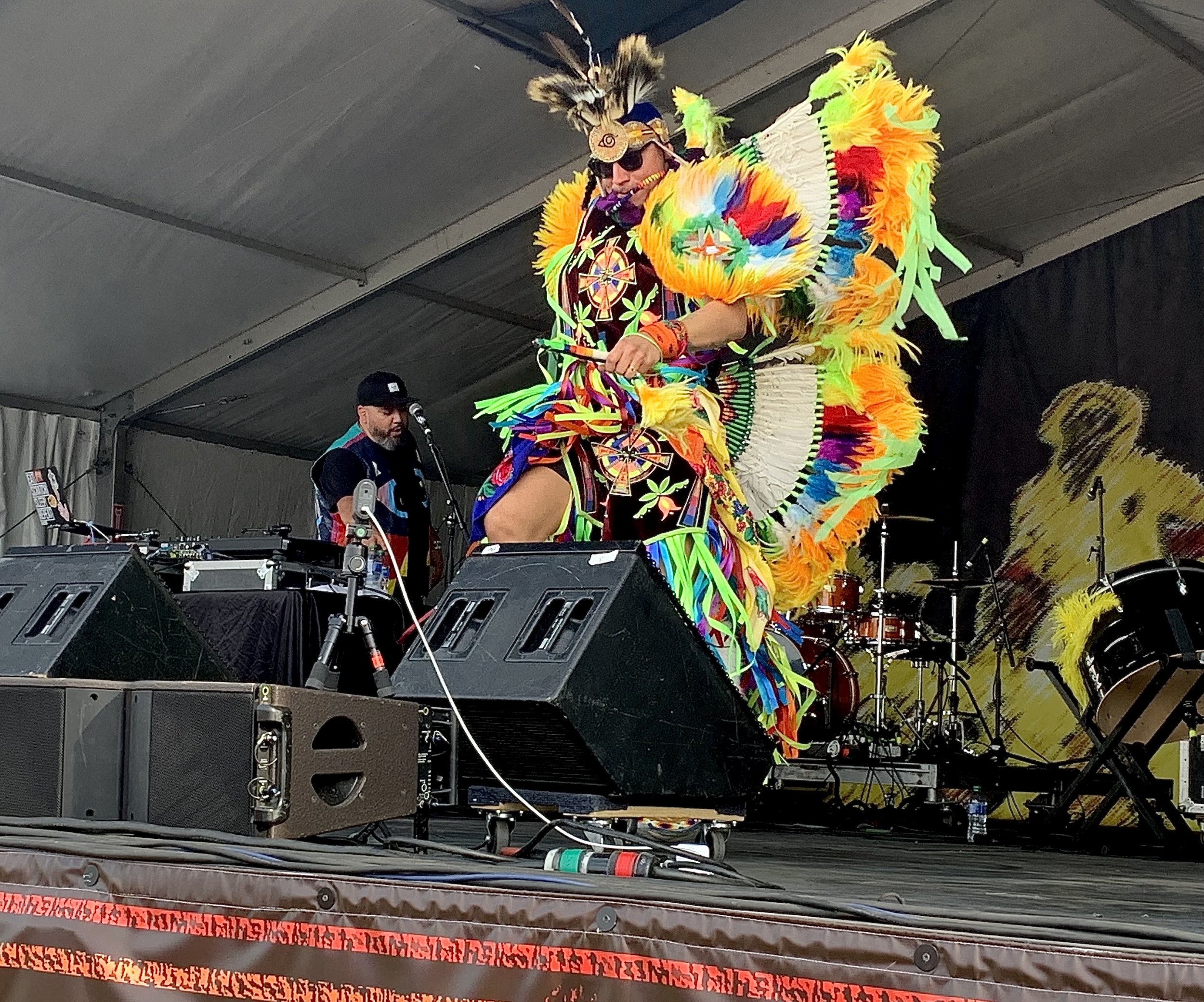A Tribe Called Red Gets Visible

The aboriginal Canadian DJ trio address the invisibility that their culture has endured.
On August 10, Native American totem carver John T. Williams was shot and killed by a Seattle police officer. Williams crossed a street while carrying the knife he used for carving, and when Officer Ian Birk saw him, he pulled his cruiser over and ordered Williams to drop the knife. When he didn't, Birk shot and killed him. Police officials thought that Birk had reacted rashly, and he resigned from the department after the county prosecutor announced that charges would not be filed.
Bear Witness from the Canadian aboriginal DJ trio A Tribe Called Red found the message unmistakable: "It's still okay to kill Indians." Audio from Birk's dashboard camera adds brutal reality to "Woodcarver" from the band's album, Electric Pow Wow, as over and over again we hear Birk instructing Williams to put down the knife, then brief moments later, gunshots.
Group members Bear Witness and DJ NDN began as DJs in clubs in Ottawa, Ontario. Bear was a music fan who found his way behind the turntables, while NDN had a fuller musical background, having sang and performed in pow wow drum circles, and he played drums with a Montreal punk band. In 2008, they decided to throw a party for their people and the Electric Pow Wow was born. At first, it was simply a dance night for members of the First Nations at a club, but they started to work culturally significant references into their music. At a festival, they mashed up a grass dance song with dubstep and realized they had something. The first time third member DJ Shub saw them perform, he went home, went to work, and came back the next day with "Electric Pow Wow Drum."
The culturally specific references aren't always as obvious as they are in "Woodcarver." The textures of the drums suggest that they're likely tribal drums that have been sampled, and you can infer that the musical voices are sampled tribal chants and songs. Recently, they've replaced hip-hop's now-ubiquitous air horn sample with a pow wow call. "There're a lot of things we do that are aimed toward our community," Bear Witness says. "At the same time, it's meant to start to show people a broader vision of what aboriginal culture is."
In some cases, A Tribe Called Red uses the music to confront what First Nation culture isn't. "Braves" incorporates the Tomahawk Chop chant - "a Hollywood fabrication," Bear says. "What we're doing by sampling it and reworking a track around it is we're changing the meaning of it. It's been indiginized because a group of aboriginal artists have remixed it and created something out of it. We've decolonized it."
If nothing else, A Tribe Called Red's music makes you aware of how low a profile aboriginal culture still has in North America. "In the past, there's been this invisibility to aboriginal people, and that's not a mistake," he says. "That was very intentionally done. We haven't had visibility around the problems that we face."
The DJs see themselves as part of a movement, particularly in Canada, where they're part of the fastest growing community in urban centers. Bear points to comedians, fashion designers such as Project Runway's Patricia Michaels and others who are doing their part to make North American natives part of the larger conversation. By playing EDM, they also give younger members of their people something they didn't have growing up - a stake. "We didn't have something that reflected us, that we could say was ours that was a part of popular culture," Bear says. "By bringing it into electronic music culture, it becomes part of the popular culture."
"Wanting to throw a party for aboriginal people is political. Those things that make up being aboriginal are political. I wake up in the morning and go get a coffee; that's a political act because everything in this society's been done to stop that from happening."
A Tribe Called Red perform Saturday at Jazz Fest at 12:50 p.m. on the Gentilly Stage, then again at 4:55 p.m. in the Cultural Exchange Pavilion.






